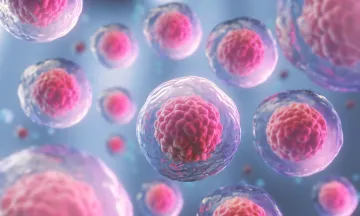Today there are no clinical treatments that provide an ideal, long-term solution for repairing long bone segment defects. Many patients require additional surgery to induce healing. Patients that heal from these injuries do not always return to pre-injury activities. Failure to heal after multiple surgeries may necessitate amputation.
Bone graft material from a patient is limited and may result in morbidity at the donor site. As an alternative solution, the Biomaterials Lab has used 3D-printed scaffolds that mimic biology to facilitate rapid bone bridging in critical-sized defects.
In a recent study, scaffolds were created based on micro-CT scans of bone and printed using polybutylene terephthalate, a thermoplastic polymer commonly used in electronics. Scaffolds were coated with tricalcium phosphate particles to induce bone growth over their surfaces.
Mesenchymal stem cells (MSCs), which exist in bone marrow and adipose (fat) tissue and which are key to natural skeletal tissue repair, were isolated for two experimental groups. One group had the defect treated using a scaffold infiltrated with these MSCs in a bioreactor. Another group had the defect treated using a scaffold without MSCs. The control group did not receive a scaffold.
Over a period of months, the groups with scaffolds showed 15.5% more bone formation around the scaffold circumference at 3 months, and 40.9% more bone formation within scaffold pores at 6 months. Those with scaffolds showed an increase in bone formation rate compared with controls. Only the bone defects seeded with scaffolds and MSCs showed complete healing of the defect.
Journal Citation
Szivek, J. A., D. A. Gonzales, A. M. Wojtanowski, M. A. Martinez, and J. L. Smith, "Mesenchymal stem cell seeded, biomimetic 3D printed scaffolds induce complete bridging of femoral critical sized defects.", J Biomed Mater Res B Appl Biomater, 2018 Mar 23. PMID: 29569331
Related
Detailing a surgical technique developed at the UArizona Biomaterial Lab for creation of a 42mm mid-diaphyseal femoral defect stabilization with an intramedullary device.
David S. Margolis, Gerardo Figueroa, Efren Barron Villalobos, Jordan L. Smith, Cynthia J. Doane, David A. Gonzales & John A. Szivek (2022): A Large Segmental Mid- Diaphyseal Femoral Defect Sheep Model: Surgical Technique, Journal of Investigative Surgery, DOI: 10.1080/08941939.2022.2045393


